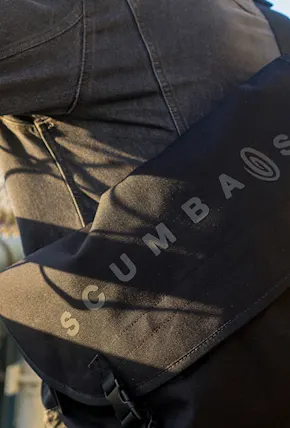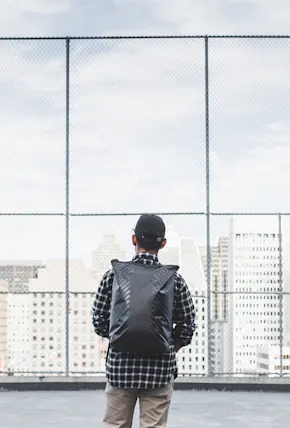The story of Timbuk2 is a classic, mirroring those told by a select few of contemporary culture’s most influential founders. It starts with a tinkerer in a garage, driven by a DIY spirit to make a better product, and ends with an iconic design that will surely last the test of time. And like at least one other, this story too takes place in The Bay. Only here, San Francisco is more than just a backdrop, it’s the backbone.
Since the day bike messenger Rob Honeycutt churned out his first Scumbag messenger bag—as the brand was originally named—on a home sewing machine in 1989, San Francisco has been part of the Timbuk2 story. It was in the Mission District where he’d spend the next 14 years working upwards of 100 hours a week making bags and hand delivering them to local independent bike shops. And it is there, in the Mission, where the brand still resides, making 100% of custom ordered bags by hand (Timbuk2 is officially the largest manufacturer within San Francisco city limits). Only now they deliver worldwide, and their brick and mortar shops span a dozen locations.
San Francisco’s influence goes far beyond the physical—the city’s vibrant, diverse, and gritty nature inform the brand’s holistic approach to making intuitive bags for moving through the urban landscape. In the 90s, this meant messenger bags for cyclists. Now, it means a wide range of carrying solutions for all city dwellers, whether their transportation of choice is a bike, subway, car, plane, ferry, or their own two feet. Regardless, the shared characteristic is a tendency to stay on the move. And no matter where you’re headed or what you’re carrying, the need for functional, durable design is equal.
Yet even as Timbuk2’s scope and product line have expanded, the goal of solving problems with functionality and forward-thinking manufacturing has remained the same. Honeycutt first began pioneering mass customization by offering custom bags in 1994 and later launched the first online customization platform in retail in 2000. Four years later the Timbuk2 Lifecycle Program was launched to encourage customers to recycle, repair, and repurpose old bags. Through this and other sustainability-minded partnerships over 15,000 bags have been repurposed—bags that would have otherwise ended up in a landfill. It’s all part of a hardly-publicized effort to lead their community (both literal and figurative) in a better direction for the generations to come.












